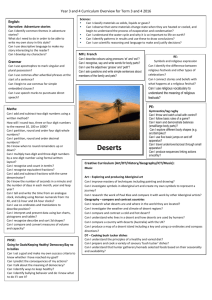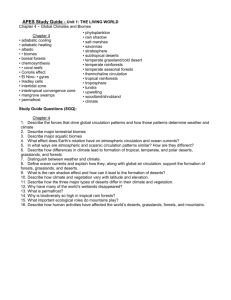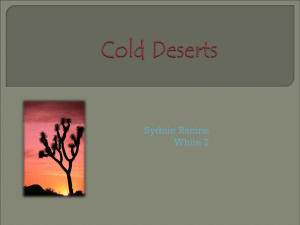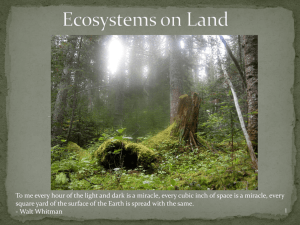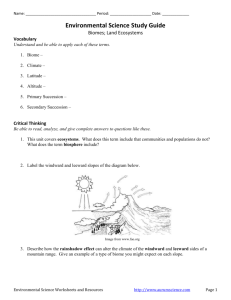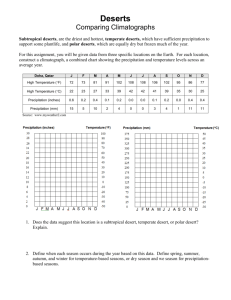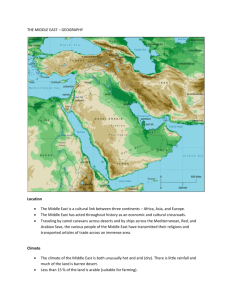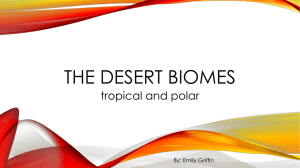Biome - TeacherWeb
advertisement
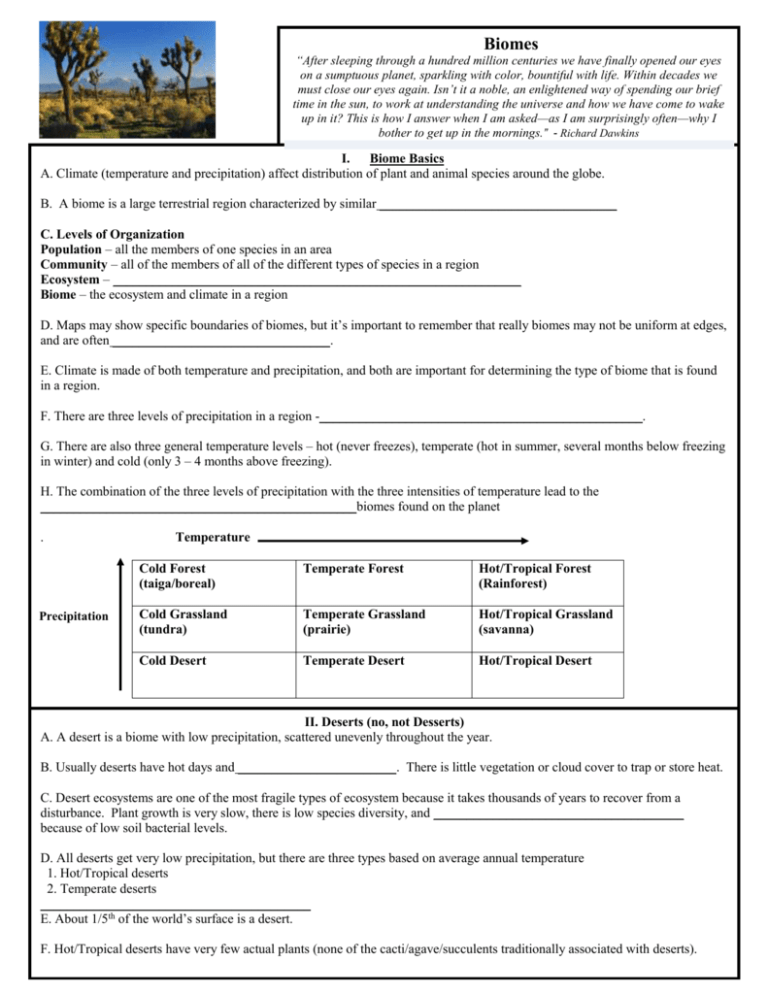
Biomes “After sleeping through a hundred million centuries we have finally opened our eyes on a sumptuous planet, sparkling with color, bountiful with life. Within decades we must close our eyes again. Isn’t it a noble, an enlightened way of spending our brief time in the sun, to work at understanding the universe and how we have come to wake up in it? This is how I answer when I am asked—as I am surprisingly often—why I bother to get up in the mornings.” - Richard Dawkins I. Biome Basics A. Climate (temperature and precipitation) affect distribution of plant and animal species around the globe. B. A biome is a large terrestrial region characterized by similar ____________________________________ C. Levels of Organization Population – all the members of one species in an area Community – all of the members of all of the different types of species in a region Ecosystem – ______________________________________________________________ Biome – the ecosystem and climate in a region D. Maps may show specific boundaries of biomes, but it’s important to remember that really biomes may not be uniform at edges, and are often _________________________________. E. Climate is made of both temperature and precipitation, and both are important for determining the type of biome that is found in a region. F. There are three levels of precipitation in a region -_________________________________________________. G. There are also three general temperature levels – hot (never freezes), temperate (hot in summer, several months below freezing in winter) and cold (only 3 – 4 months above freezing). H. The combination of the three levels of precipitation with the three intensities of temperature lead to the ________________________________________________biomes found on the planet . Precipitation Temperature Cold Forest (taiga/boreal) Temperate Forest Hot/Tropical Forest (Rainforest) Cold Grassland (tundra) Temperate Grassland (prairie) Hot/Tropical Grassland (savanna) Cold Desert Temperate Desert Hot/Tropical Desert II. Deserts (no, not Desserts) A. A desert is a biome with low precipitation, scattered unevenly throughout the year. B. Usually deserts have hot days and ________________________. There is little vegetation or cloud cover to trap or store heat. C. Desert ecosystems are one of the most fragile types of ecosystem because it takes thousands of years to recover from a disturbance. Plant growth is very slow, there is low species diversity, and ______________________________________ because of low soil bacterial levels. D. All deserts get very low precipitation, but there are three types based on average annual temperature 1. Hot/Tropical deserts 2. Temperate deserts _________________________________________ E. About 1/5th of the world’s surface is a desert. F. Hot/Tropical deserts have very few actual plants (none of the cacti/agave/succulents traditionally associated with deserts). II. Deserts (continued) G. Hot deserts have hard, wind-blown surfaces with lots of rocks. The sand usually has a hard crust, which can be __________________________________________________________________ H. Dust storms are common, especially if the hard sand crust is broken by human or animal activity. I. The Sahara desert is an example of a hot desert. Temperatures are above freezing year-round, consistently about 20 – 25 C. J. Temperate deserts have high summertime temperatures, but have several months of freezing weather in the winter. _____________________________________________________ K. Temperate deserts have the plants traditionally associated with deserts – cacti, agave, and other succulents. L. The ________________________________________________________is an example of a temperate desert. M. Cold deserts, such as the Gobi in Mongolia, only get above freezing for 6 or 7 months of the year. Antarctica is considered a cold desert (due to lack of rainfall). VII. Specifics of Natural Selection ___________________- the differential survival and reproduction of individuals in a population based on the traits they posses Natural selection may have a ___________________, stabilizing, or ___________________ effects on the range of traits (phenotypes) in a population I. a)______________________ - shifts allele frequencies in a constant direction in response to the environment b) ______________________ - favors the most common phenotype in a population II. c)_______________________- favors characteristics at both ends of the range of traits in the population and operates against intermediate forms. VIII Non-Random Mating To maintain genetic equilibrium, individuals in a population must choose mates at _________________. In reality, individuals often do not do this. Instead, they may choose a mate based on mating dances, colors, or other behaviors. This is a special type of selection called _____________________________. This results in the best males passing on their genes with ____________ frequency than other males. Individuals often might mate with other members of their species that are closely related to them. This promotes ________________ - mating between closely related individuals. This increases the frequency of _________________________ in the population and reduces the frequency of heterozygous individuals. VIII. Speciation _____________________ - the process by which species originate How does speciation occur? Sometimes barriers arise between the parts of the population and create ______________________________. Then, two or more gene pools exist when there was only one. If over time there is ______________________ between the two populations then selection, mutation, and genetic drift can operate differently in each population. III. This can cause different traits to arise in each population. This is called __________________ When the divergence is great enough that the two populations will no longer __________________, the two population have become different species. _____________________ -Populations can be separated by geographic barriers. ex. mountains, rivers Ex. The Blue-headed wrasse was separated from the Rainbow wrasse when the Isthmus of Panama was created. ___________________ - any aspect of structure or behavior that prevents interbreeding ex. the development of different breeding seasons or different mating behaviors Over time, two species of frog have developed different mating calls through isolation.
